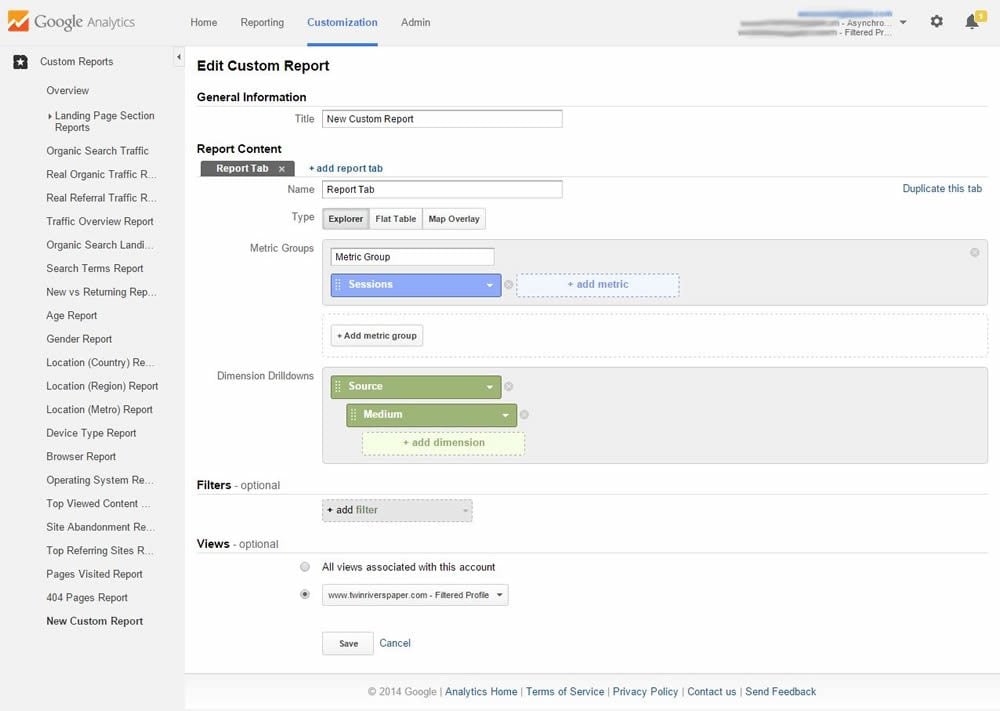Translating the Importance of Additional Dimension in Google Analytics: All About Its Significance and Impact
In the realm of digital analytics, the use of second dimensions within Google Analytics serves as a critical tool for discerning much deeper layers of information insights. The significance of second dimensions lies in their capacity to give a nuanced view of user actions and communication with a web site or platform.
Understanding Additional Measurements in Google Analytics
The understanding of secondary measurements in Google Analytics is important for getting deeper understandings right into user actions and website performance. While main measurements give fundamental data points such as traffic sources and page views, secondary measurements enable for a more nuanced analysis by giving additional context to these main metrics. By integrating second dimensions, users can segment and filter their data to reveal patterns and fads that might not be promptly evident.

Unveiling the Perks of Second Measurements
Building upon the foundational understanding of second dimensions in Google Analytics, checking out the advantages they provide reveals vital insights for enhancing information analysis and decision-making. By including second dimensions, users can delve deeper right into their data, obtaining a much more thorough view of customer behavior, content performance, and other vital metrics.
Furthermore, secondary dimensions provide context to key information, supplying extra layers of information that can aid in comprehending customer communications and preferences. This improved understanding can direct calculated decision-making, bring about even more targeted advertising campaigns, internet site optimizations, and general enhanced performance. Basically, second dimensions function as a powerful tool for unlocking deeper understandings and optimizing the utility of Google Analytics for services and site owners.
Leveraging Secondary Dimensions for Enhanced Insights
By taking advantage of the power of secondary dimensions in Google Analytics, services can discover deeper insights that drive educated decision-making and critical optimization initiatives. Leveraging second dimensions permits businesses to dig past surface-level information and acquire a more extensive understanding of user actions, audience demographics, website traffic resources, and site performance. By integrating key dimensions like website traffic resources with additional dimensions such as geographical location or gadget group, services can recognize which devices or regions are driving the most valuable website traffic to their website.
Additionally, secondary measurements make it possible for companies to section and analyze data much more efficiently, assisting them recognize patterns, patterns, and possibilities that may have or else gone unnoticed. By using secondary dimensions, services can customize their advertising strategies, material, and user experience to much better satisfy the demands and preferences of their target audience. Essentially, leveraging second dimensions in Google Analytics equips businesses to make data-driven choices that result in boosted efficiency, enhanced ROI, and sustainable development.

Impact of Additional Measurements on Information Analysis
Enhancing data analysis with the usage of second dimensions in Google Analytics offers organizations with a deeper understanding of their on-line efficiency metrics. By incorporating additional measurements, such as time of day, geographic place, or tool group, companies can reveal valuable insights that may have her explanation been forgotten with key dimensions alone. This enhanced degree of granularity enables for more specific division of information, allowing services to recognize patterns, patterns, and connections that can drive critical decision-making.

Maximizing Potential: Second Dimensions Strategies
One essential technique is to incorporate additional measurements with key dimensions to acquire a detailed sight of customer interactions. Coupling the primary measurement of 'source/medium' with secondary dimensions like 'landing discover this info here page' or 'gadget group' can reveal which networks are driving web traffic to certain pages or just how individual actions varies across gadgets.
In addition, utilizing second dimensions to sector information based upon individual demographics, actions, or innovation can help businesses tailor their advertising and marketing efforts to certain target market sectors. This targeted technique can cause improved conversion rates, enhanced customer experiences, and inevitably, increased ROI. By maximizing the potential of additional dimensions in Google Analytics, companies can make educated decisions, optimize their on-line visibility, and drive lasting growth.
Verdict
In final thought, additional measurements in Google Analytics play an essential function in giving much deeper understandings and enhancing information analysis. By making use of additional dimensions efficiently, companies can get an extra detailed understanding of customer behavior and website performance. Integrating additional measurements right into information analysis approaches can result in more educated decision-making and boosted overall performance. It is vital for businesses to utilize the power of additional dimensions to maximize their prospective and attain greater success in their on-line ventures (what is a “secondary dimension” in google analytics?).
While main dimensions supply essential data points such as website traffic sources and page views, second dimensions enable for a much more nuanced evaluation by supplying extra context to these main metrics. By integrating key measurements like web traffic sources with additional dimensions such as geographical location or tool classification, companies can recognize which regions or gadgets are driving the most useful traffic to their website.
By incorporating secondary measurements, such as time of day, geographical place, or gadget category, services can uncover important understandings that might have been neglected with primary dimensions alone. One essential approach is to combine additional measurements with primary dimensions to obtain a detailed sight of customer communications. Combining the key measurement of 'source/medium' with additional measurements like 'touchdown web page' or 'device category' can reveal which networks are driving website traffic to details web pages or just how individual actions differs throughout tools.